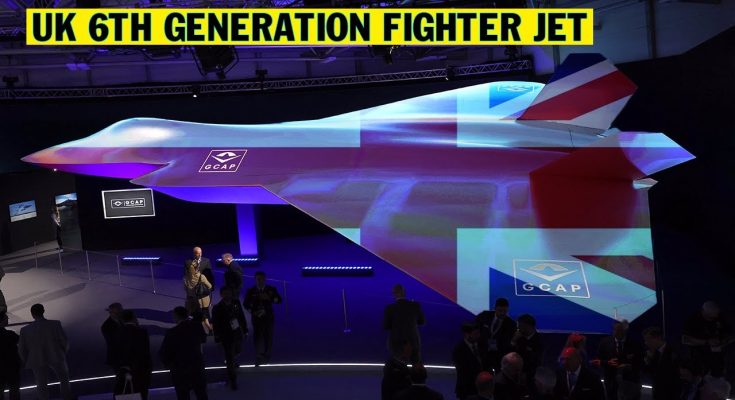In a groundbreaking development that has sent shockwaves through the global military aviation community, the United Kingdom has unveiled its sixth-generation fighter jet, the Tempest. Revealed as part of the Global Combat Air Programme (GCAP), a joint venture between the UK, Italy, and Japan, the Tempest is set to revolutionize the future of aerial combat. The United States, long known for its dominance in cutting-edge fighter technology, has been left stunned by the rapid progress made by the UK in this domain. The Tempest is expected to enter service by 2035 and will replace the Eurofighter Typhoon, marking a pivotal shift in the evolution of fighter aircraft.
The Tempest’s Revolutionary Features
The Tempest is more than just a fighter jet; it represents a new era of aviation with advanced technology that pushes the boundaries of stealth, weapons systems, and artificial intelligence integration. It is designed to operate in highly contested environments, and its capabilities aim to outpace emerging threats from adversaries like Russia and China. Key features of the Tempest include:
- Stealth Technology: The Tempest incorporates cutting-edge stealth features, significantly reducing its radar signature. This enables it to operate effectively in contested airspaces without being detected by enemy radar systems.
- Advanced Sensor Fusion: The jet is equipped with a next-generation sensor suite that fuses information from multiple sources. This allows the aircraft to maintain superior situational awareness and enhances its targeting and operational effectiveness.
- Unmanned Operations: One of the most innovative features of the Tempest is its ability to function both with a pilot and autonomously. The integration of artificial intelligence (AI) allows the jet to make decisions and adapt to evolving combat situations, increasing its operational flexibility.
- Hypersonic Weapons: The Tempest is designed to carry and deploy hypersonic weapons, enabling it to engage targets at extremely high speeds, further enhancing its offensive capabilities.
- Collaborative Engagement: The jet is envisioned to work seamlessly with other manned and unmanned platforms, acting as a “combat cloud” that can control and coordinate multiple assets during a mission. This networked approach provides a significant advantage in modern warfare, where coordination and speed are critical.
The United States’ Response
The unveiling of the Tempest has caught the U.S. military and defense experts by surprise. While the United States has been a leader in fighter jet technology, particularly with its fifth-generation F-35 and F-22 Raptors, the Tempest pushes the envelope in ways that the U.S. has yet to fully explore. The potential of the Tempest, especially its AI capabilities and the integration of hypersonic weapons, has prompted the U.S. to reassess its own plans for sixth-generation fighter jets.
U.S. defense analysts have expressed admiration for the UK’s rapid progress in the development of the Tempest, acknowledging that the fighter jet’s capabilities could significantly alter the balance of power in the skies. The United States now faces the challenge of accelerating its own sixth-generation fighter programs, such as the Next Generation Air Dominance (NGAD) project, to maintain its edge in aerial combat.
Strategic Implications
The development of the Tempest also has significant strategic implications. The aircraft is a symbol of the UK’s military innovation and technological prowess, and its collaboration with Italy and Japan highlights the importance of international partnerships in modern warfare. The U.S., long the dominant force in military aviation, now faces competition on an entirely new level. This could lead to increased cooperation or competition in the race to develop the next-generation aircraft that will dominate the skies for decades to come.
In conclusion, the Tempest marks a turning point in the future of fighter aircraft, showcasing advancements in stealth, AI, and weapons systems that are set to reshape the battlefield. The U.S. military’s reaction to this reveal is a mix of admiration and concern, with the realization that the Tempest could become a game-changer in the ongoing evolution of air superiority. As the Tempest moves toward its expected 2035 service date, the U.S. will undoubtedly intensify its own efforts to develop a fighter jet that can match the pace of innovation set by the UK.



